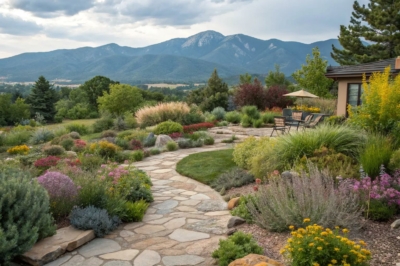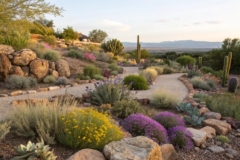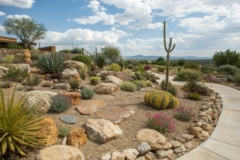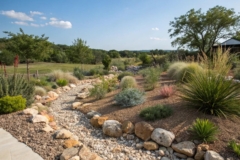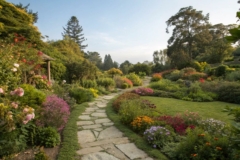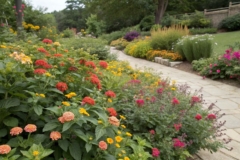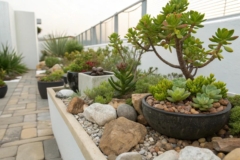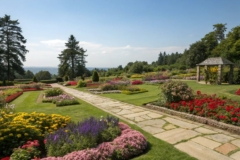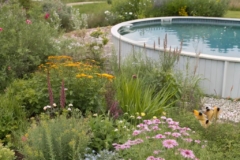1. Install Solar Lighting
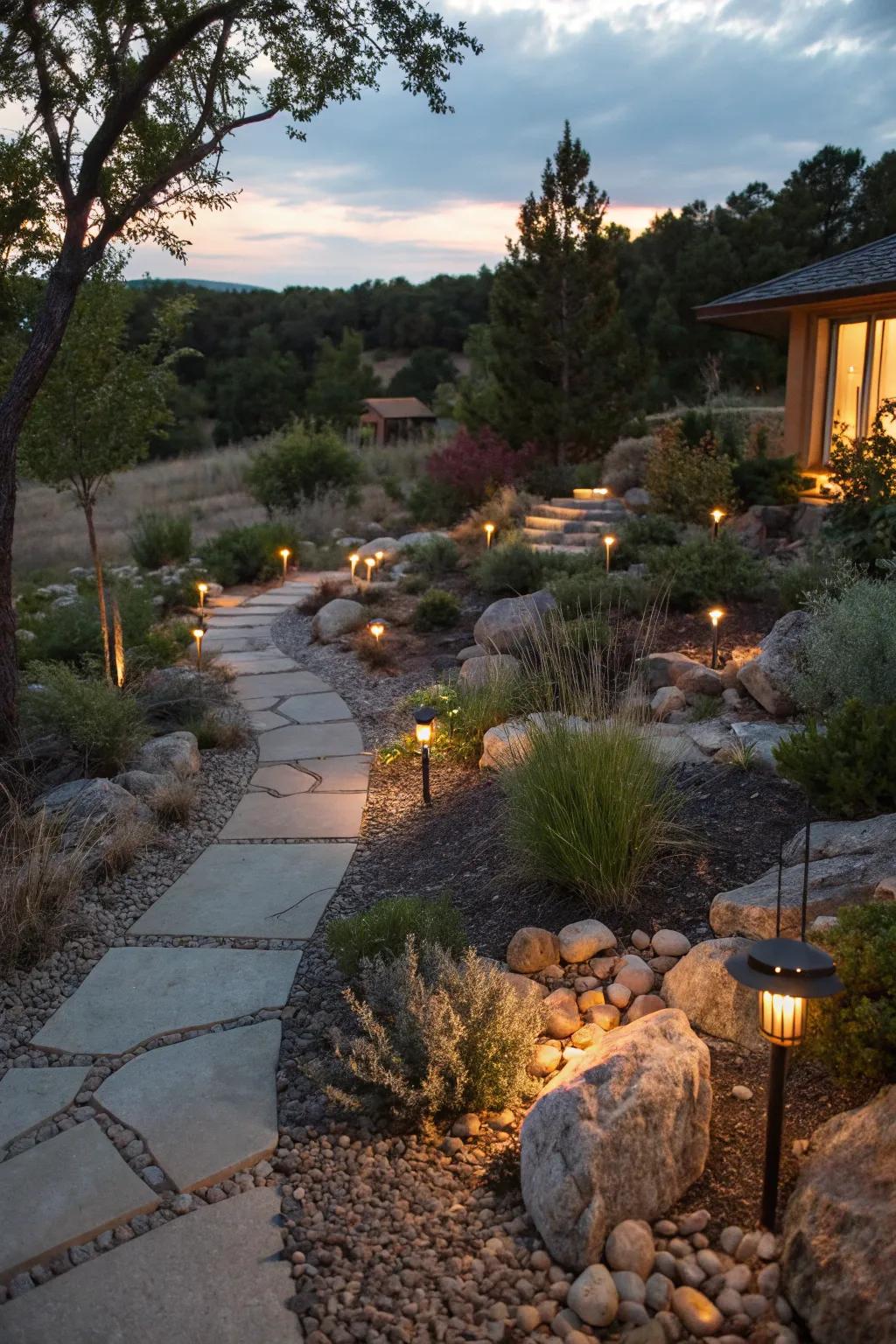
Solar lights can highlight features and extend garden enjoyment into the evening. I love the magical glow they provide after sunset.
May just do the trick:
- Outdoor Solar Pathway Lights: Illuminate your garden path effortlessly with stylish solar pathway lights, ensuring safety and ambiance.
- Solar Garden Spotlights: Highlight garden features with solar spotlights, perfect for creating a captivating evening atmosphere.
- Decorative Solar Lanterns: Enhance your garden’s charm with decorative solar lanterns, adding a warm, inviting glow.
2. Incorporate Rock Elements
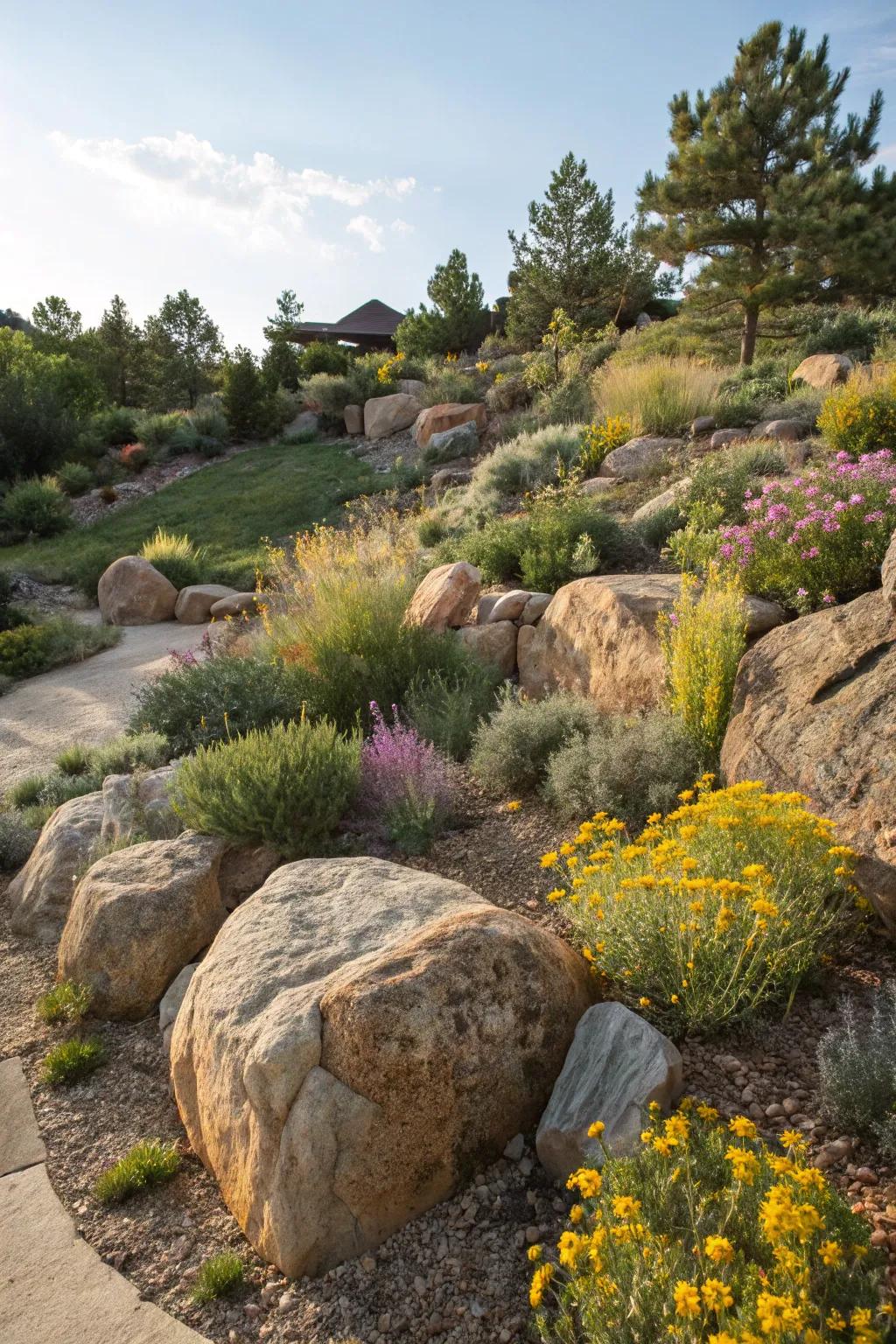
Adding rocks and boulders can enhance the natural beauty of your xeriscape garden. I love how they create texture and help manage water flow in my garden design.
A few choices to try:
- Decorative Landscape Boulders: Elevate your garden with natural boulders for texture and water flow management.
- Pebbles and Small Stones: Add depth and contrast to your xeriscape garden using colorful pebbles.
- Rock Garden Edging: Define your garden spaces with durable rock edging, enhancing both aesthetics and structure.
3. Add Yarrow for Brightness
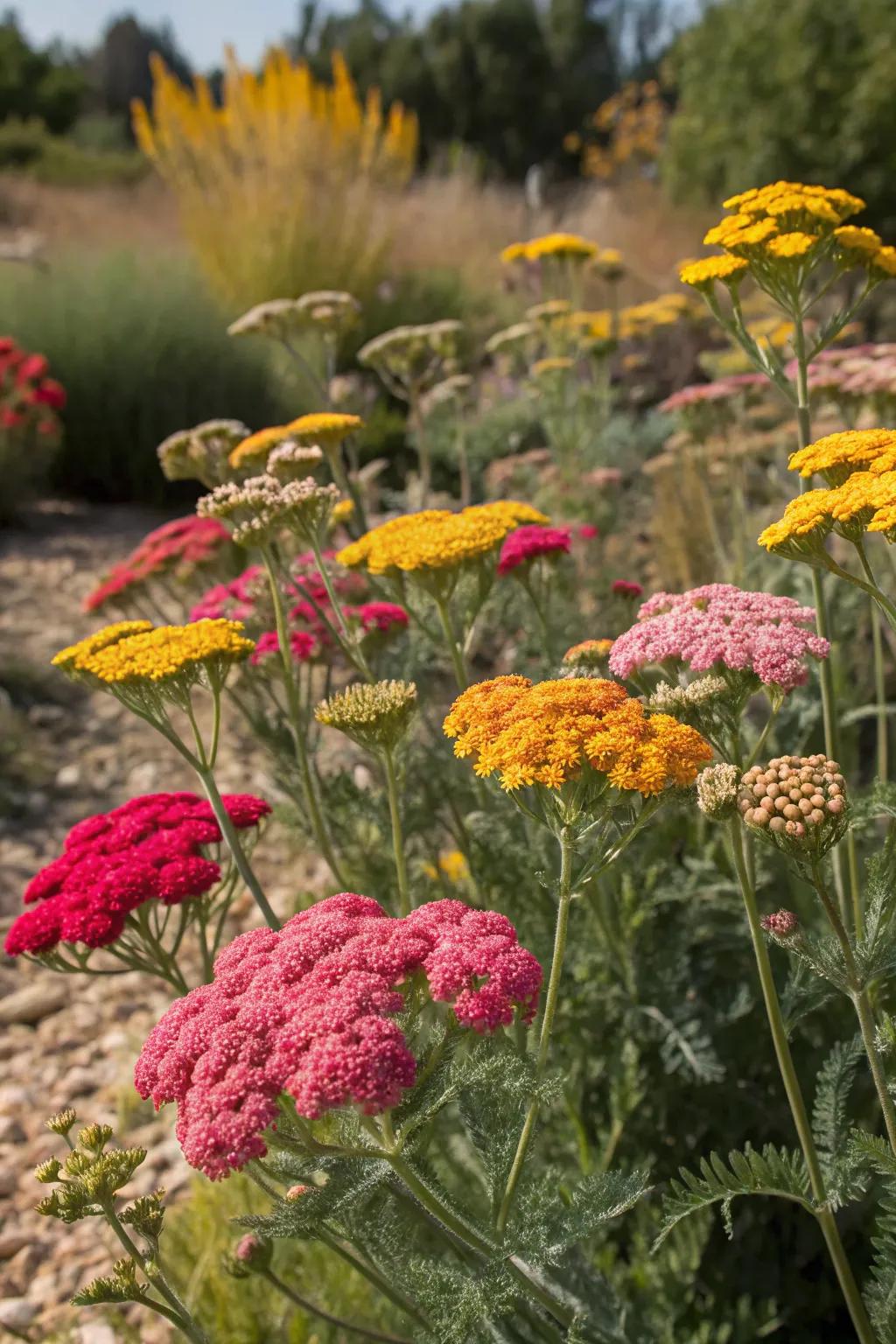
Yarrow is a hardy, drought-tolerant plant that bursts with color. In my garden, it’s a bright spot that requires minimal care.
Try these:
- Yarrow Seeds Pack: Grow vibrant yarrow effortlessly in your garden, adding a splash of color with ease.
- Drought-Tolerant Plant Fertilizer: Nurture your yarrow plants with this specialized fertilizer for optimal drought-resistant growth.
- Garden Soil Moisture Meter: Monitor soil moisture levels efficiently to ensure your yarrow thrives with minimal watering.
4. Utilize Succulents for Texture
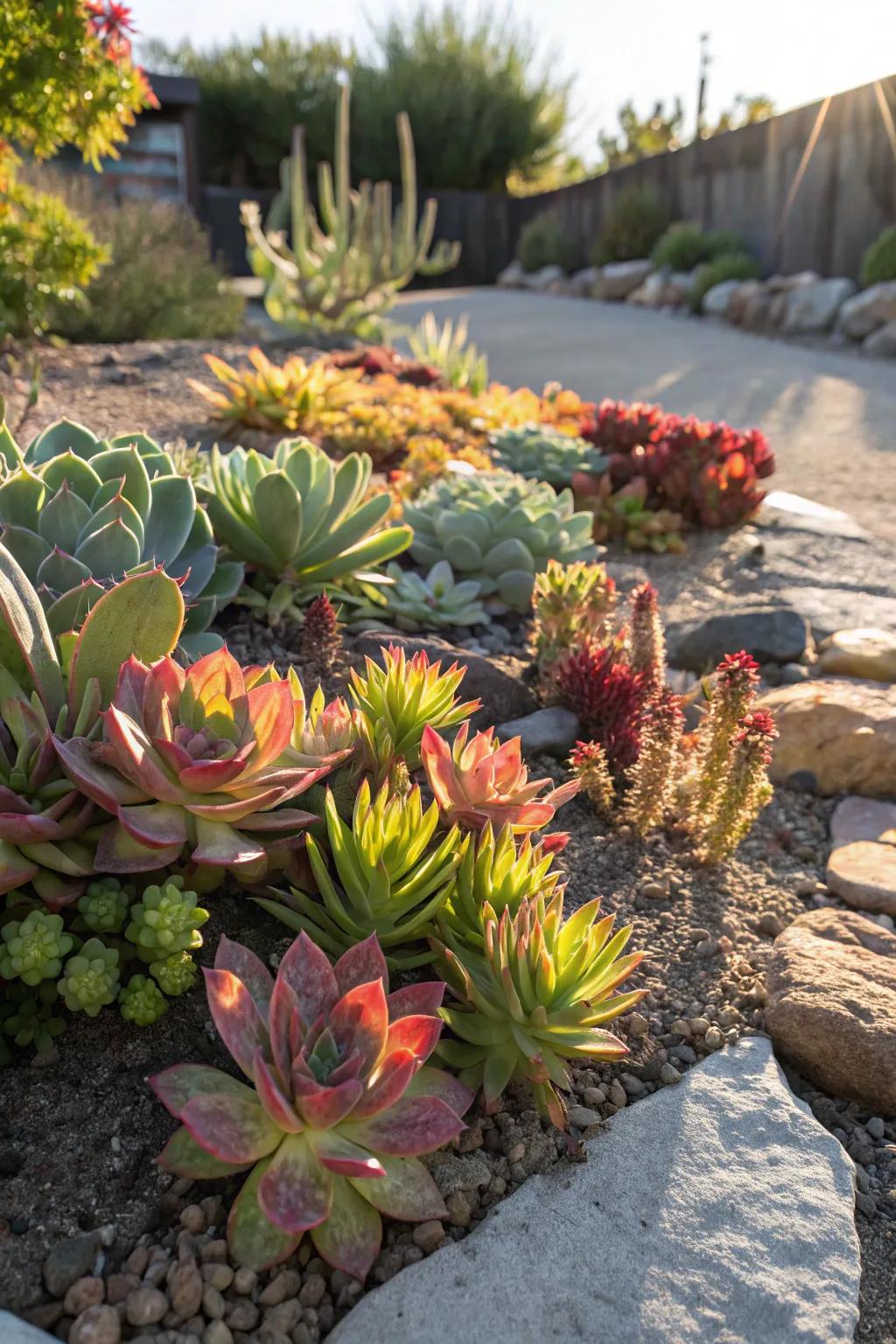
Succulents are perfect for adding texture and interest to a xeriscape garden. I love mixing different varieties for a unique look that always draws compliments.
These products might be useful:
- Assorted Live Succulent Plants: Enhance your garden with diverse succulents, offering unique textures and colors to delight everyone.
- Succulent Planting Soil Mix: Provide the ideal environment for your succulents with this specially formulated soil mix.
- Decorative Pebbles for Succulents: Add an aesthetic touch to your succulent display with these decorative garden pebbles.
5. Frame with Drought-Tolerant Shrubs
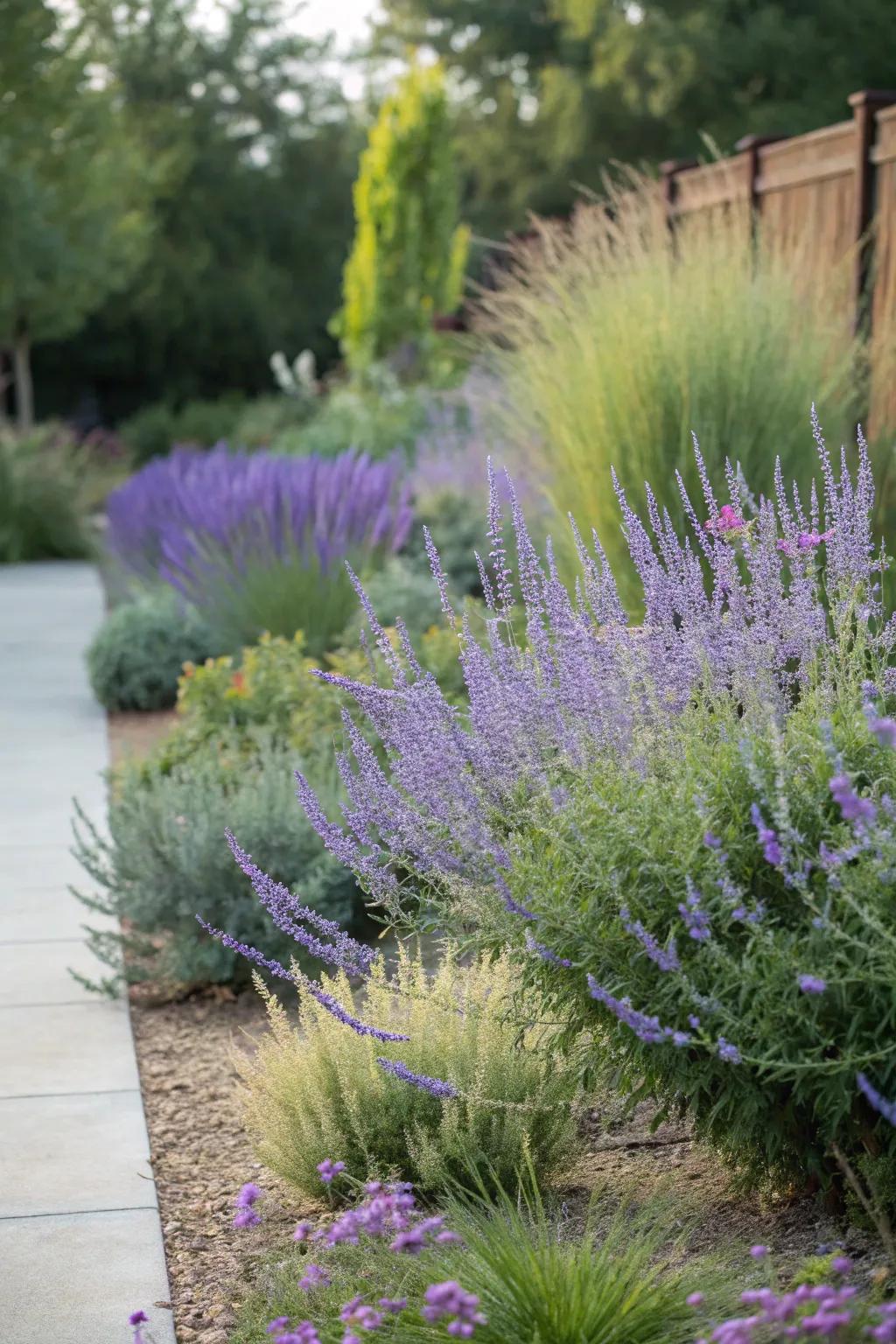
Shrubs like Russian Sage or Rabbitbrush can define spaces and add privacy. I often use them to create a cozy nook in my garden.
A few things you might like:
- Russian Sage Seeds: Cultivate a beautiful, resilient garden with these Russian Sage seeds perfect for dry climates.
- Rabbitbrush Starter Plants: Enhance privacy and style in your garden with these easy-to-grow Rabbitbrush starter plants.
- Drought-Tolerant Shrub Fertilizer: Boost growth of your xeriscape shrubs using this specially formulated drought-tolerant fertilizer.
6. Embrace Minimalism
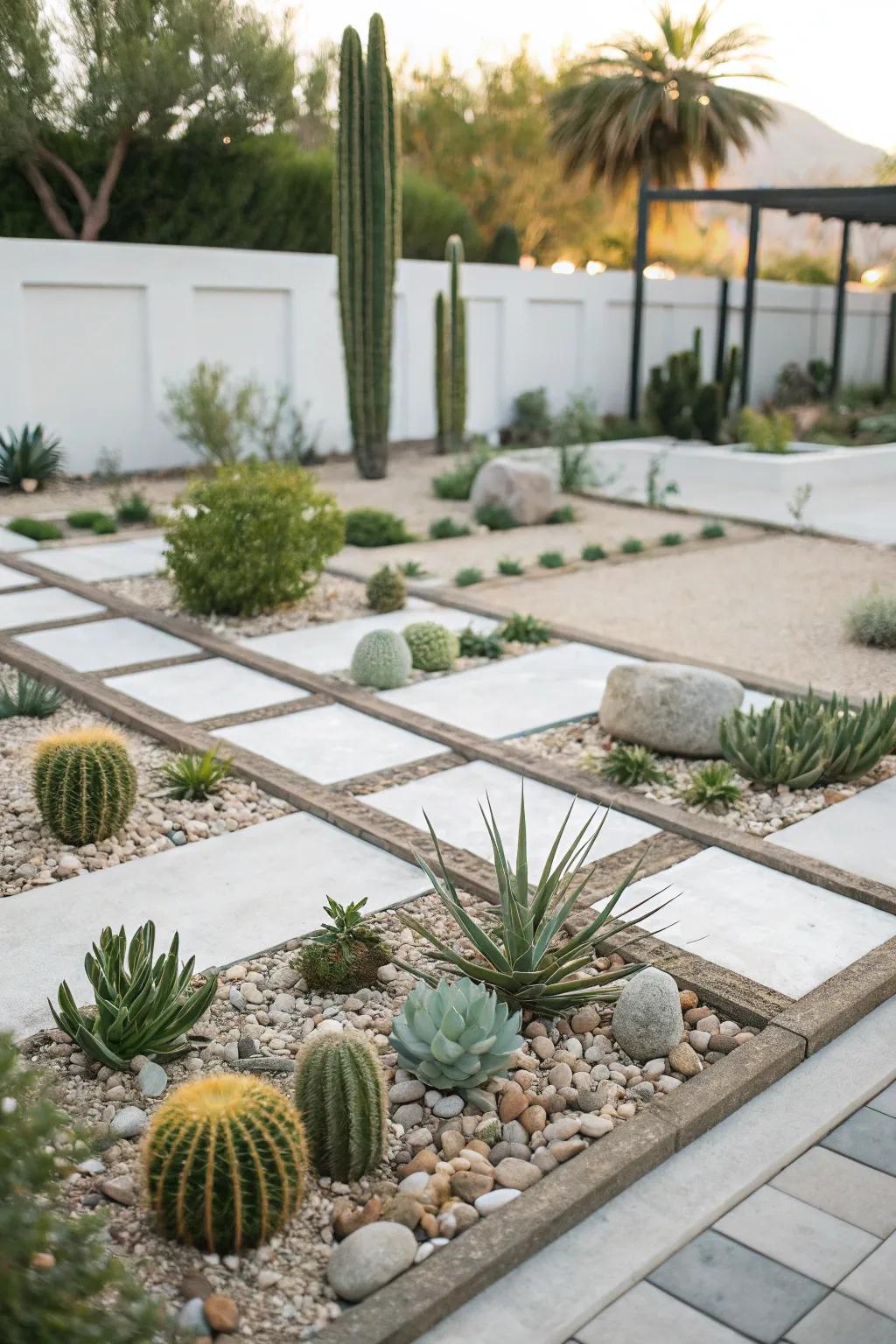
A minimalist design can create a serene, uncluttered space. I find that fewer plant varieties allow each one to shine in its own way.
Maybe worth checking out:
- Minimalist Garden Planter Boxes: Enhance your garden’s elegance with sleek planter boxes, perfect for a neat minimalist look.
- Decorative Gravel for Landscaping: Create a serene, uncluttered space with decorative gravel, blending beauty and functionality seamlessly.
- Succulent and Cactus Mix Plants: Introduce diverse yet simple plant life with a succulent and cactus mix for easy care.
7. Design with Permeable Pathways
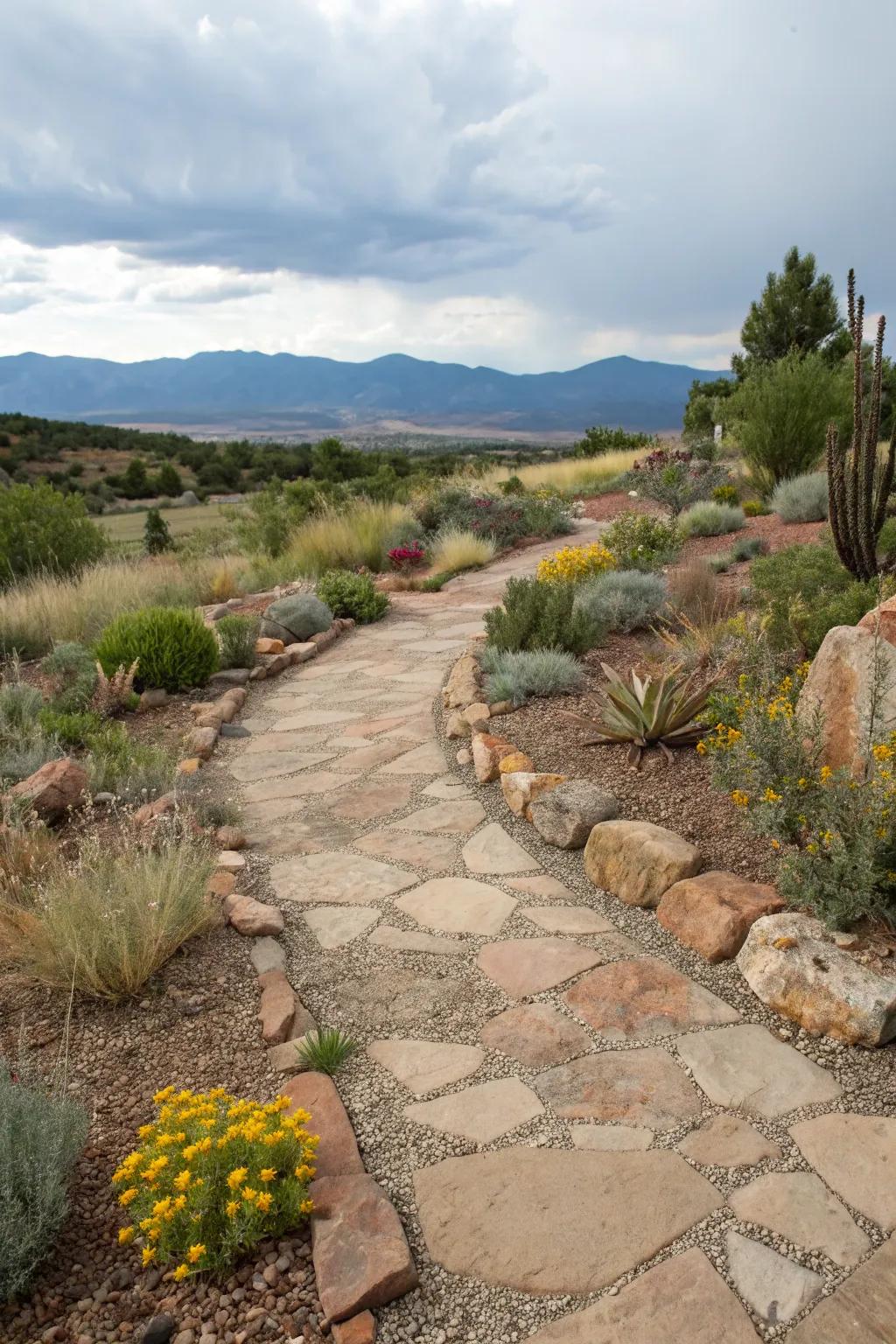
Using gravel or flagstone for pathways allows water to infiltrate the ground, reducing runoff. My garden paths not only look great but also help the environment.
Some handy options:
- Natural Flagstone Pavers: Enhance your garden paths with natural flagstone for a durable and eco-friendly option.
- Decorative Gravel: Use decorative gravel for water-friendly pathways and a visually appealing landscape touch.
- Landscape Edging: Maintain clean, defined pathways with landscape edging to enhance your garden’s tidy appearance.
8. Include Evergreen Plants
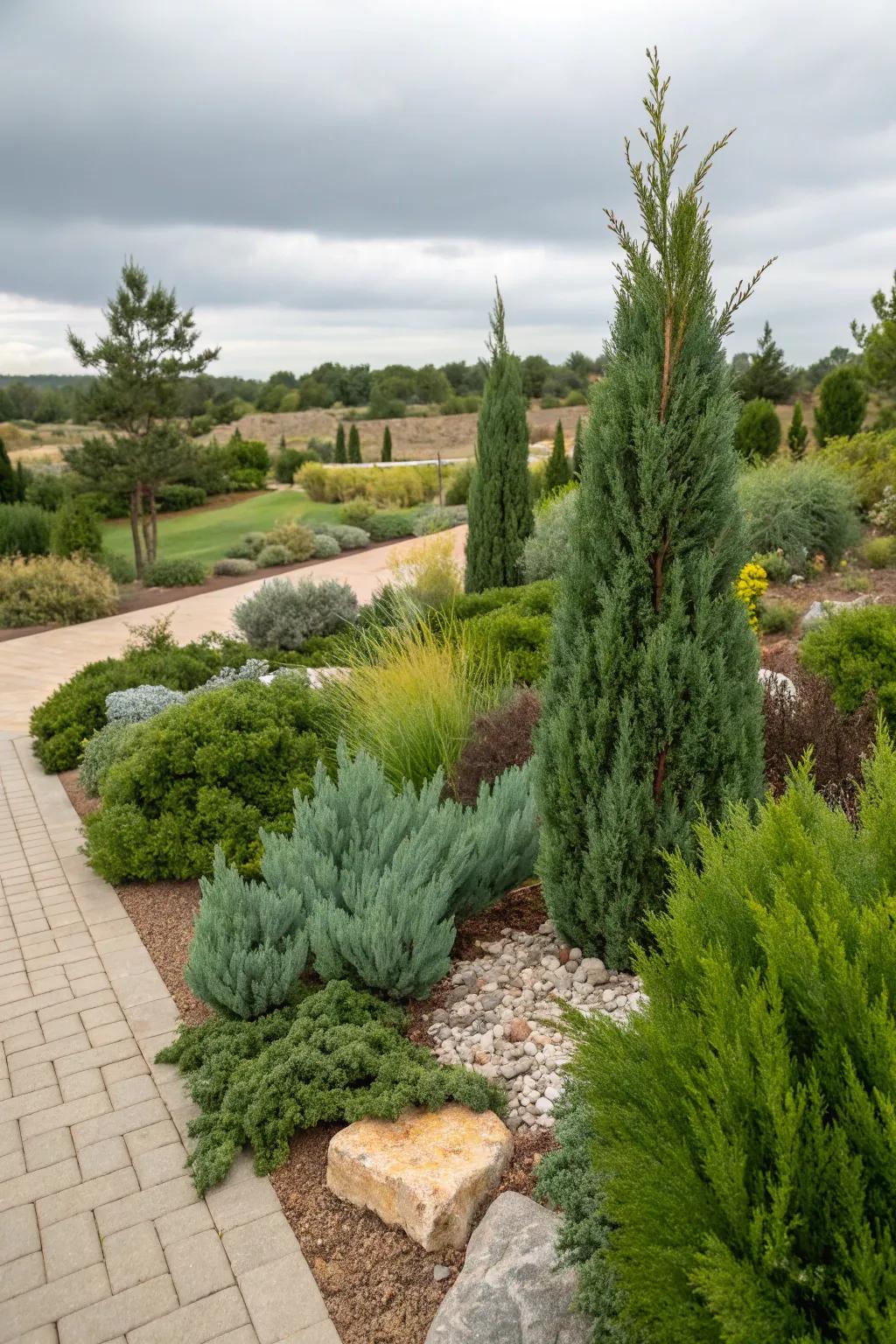
Evergreens such as Juniper provide year-round structure and color. They’re a constant in my garden, offering a lush backdrop even in winter.
You might give these a try:
- Juniper Shrub Seedlings: Enhance your garden with hardy Juniper shrubs for luscious green hues all year round.
- Premium Evergreen Fertilizer: Support the health and growth of your evergreens with this specialized fertilizer blend.
- Decorative Garden Mulch: Maintain moisture and add visual appeal with high-quality decorative garden mulch.
9. Try Creeping Groundcovers

Groundcovers like Ice Plant spread easily and fill gaps with minimal water. They’re a lifesaver in my garden, keeping everything looking full and lush.
Possibly handy products:
- Ice Plant Seeds: Easily sow these seeds to create a drought-tolerant, colorful carpet in your garden.
- Pre-Planted Groundcover Mats: Transform bare soil quickly with these ready-to-plant groundcover mats for instant greenery.
- Drought-Resistant Plant Set: Discover a mix of xeriscape plants perfect for low-water landscaping and vibrant gardens.
10. Start with Native Grasses
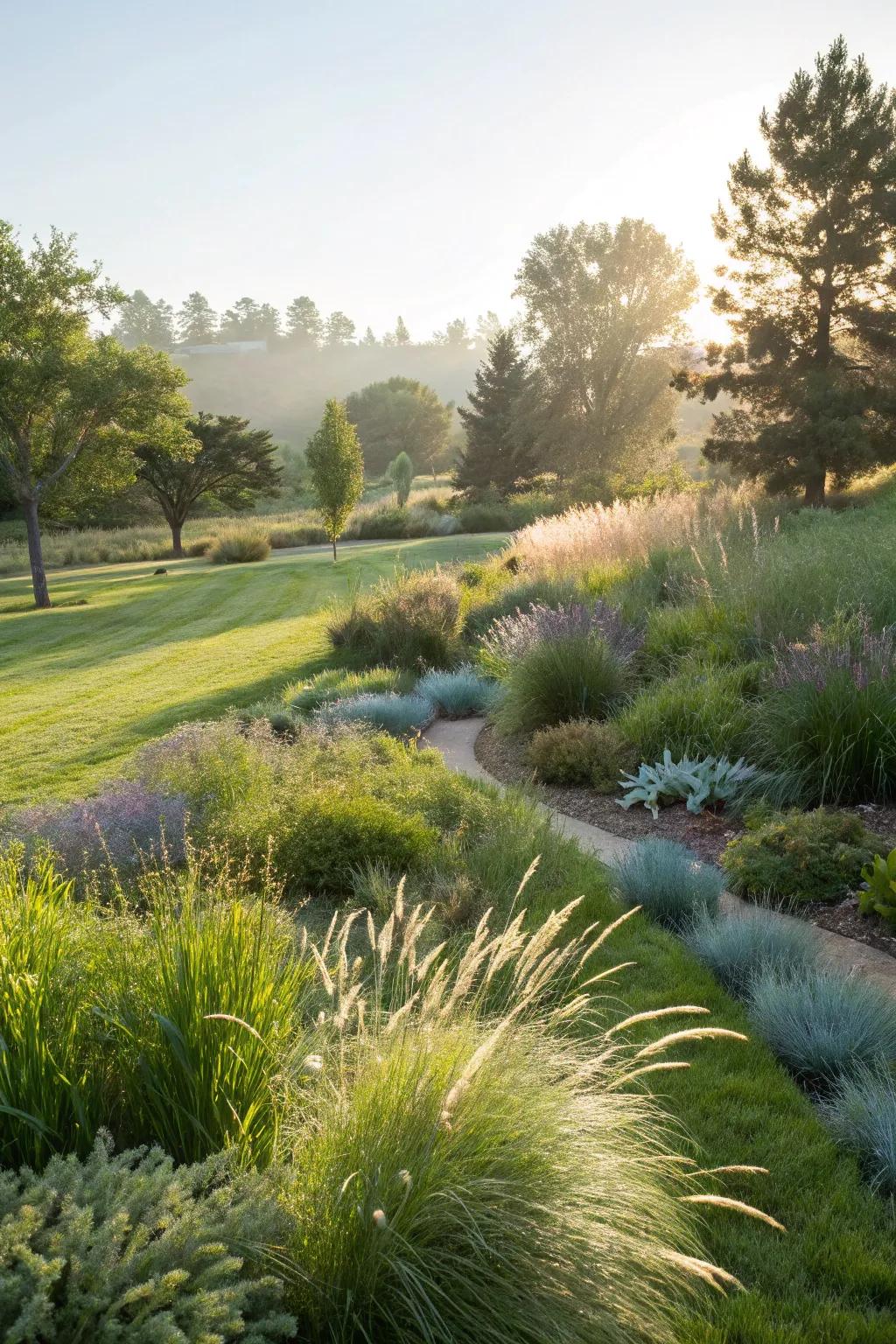
Native grasses like Blue Grama and Buffalo Grass are perfect for a xeriscape garden in Colorado. They require little water and provide a soft, natural look that I absolutely adore in my own backyard.
These products might help:
- Drought-Resistant Grass Seed Mix: Plant this drought-resistant grass seed mix to ensure a lush, eco-friendly lawn with minimal upkeep.
- Organic Soil Conditioner: Enhance soil health with this organic conditioner, perfect for sustaining native grasses in any climate.
- Eco-Friendly Lawn Fertilizer: Nourish your native grasses with this eco-friendly fertilizer to promote vibrant growth without excess water.
11. Use Container Gardens
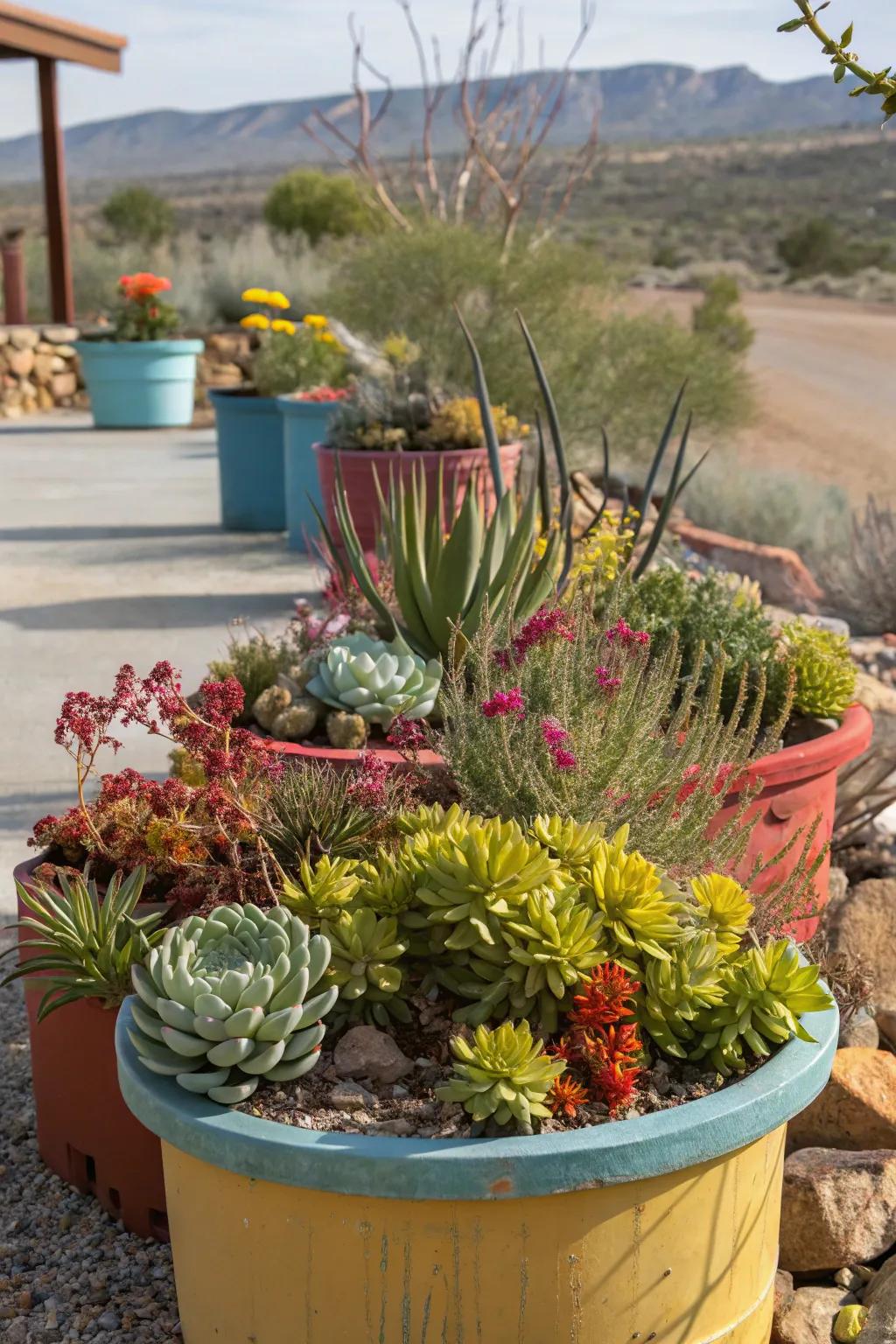
Container gardens are great for adding flexibility and height variations. I enjoy the creativity of changing them up with the seasons.
Possibly helpful picks:
- Colorful Ceramic Plant Pots: Elevate your garden style with vibrant ceramic pots, perfect for showcasing xeriscape plants.
- Succulent and Cactus Soil Mix: Optimize plant health with this soil mix, ideal for container gardening in arid climates.
- Self-Watering Planters: Ensure your plants thrive with low maintenance self-watering planters, perfect for busy gardeners.
12. Go for Maximalism
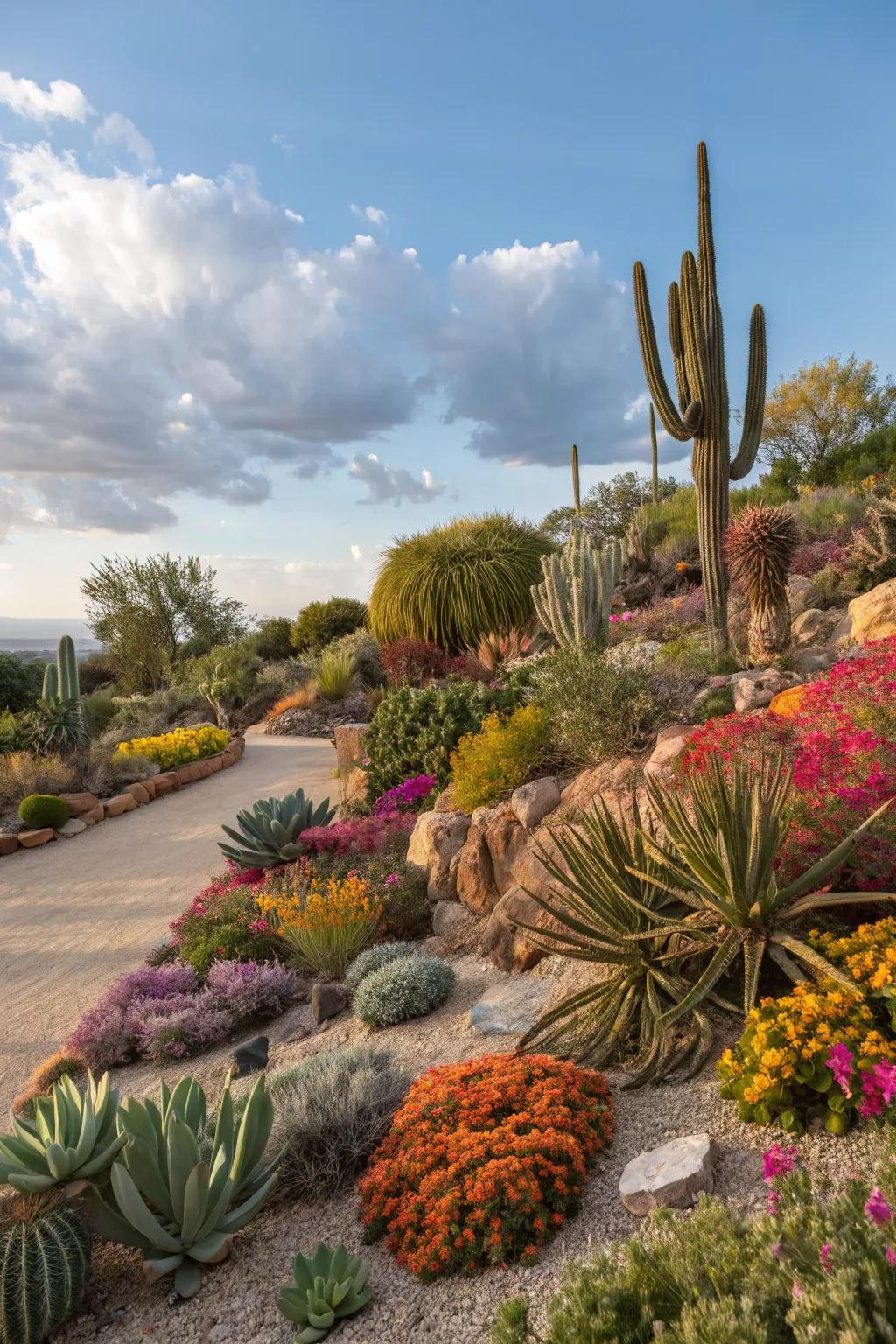
On the flip side, a maximalist approach can offer a riot of color and texture. My garden bursts with life, and it’s a joy to see all the elements come together.
Some ideas to consider:
- Assorted Cactus and Succulent Collection: Transform your garden with vibrant succulents, adding unique forms and colors efficiently.
- Colorful Perennial Wildflower Seed Mix: Cultivate a seasonal tapestry of wildflowers, enhancing your garden’s color and diversity easily.
- Decorative Garden Rock Pathway Kit: Create a stunning stone pathway, complementing your vibrant garden landscape effortlessly.
13. Create a Dry Creek Bed
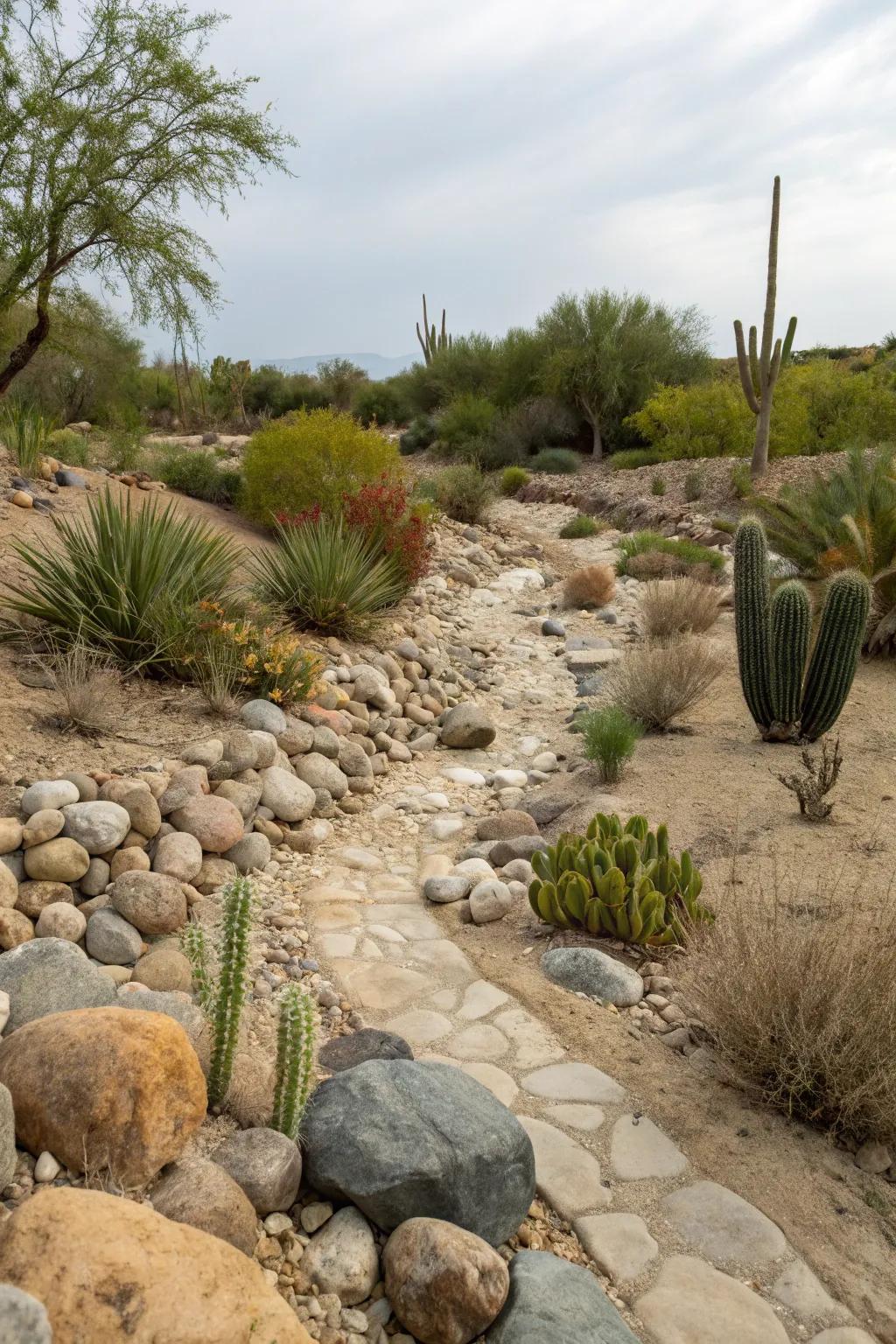
A dry creek bed can add a beautiful, natural element to your landscape while guiding rainwater. I always marvel at how it transforms the look of my garden after a rain.
Products that could assist:
- Landscape River Rocks: Enhance your dry creek bed with diverse river rocks for a natural, aesthetic appeal.
- Drought-Tolerant Plants: Choose drought-tolerant plants to adorn your creek bed, ensuring a sustainable and vibrant garden.
- Landscape Fabric: Utilize landscape fabric to prevent weed growth and maintain the integrity of your dry creek bed.
14. Implement Raised Beds
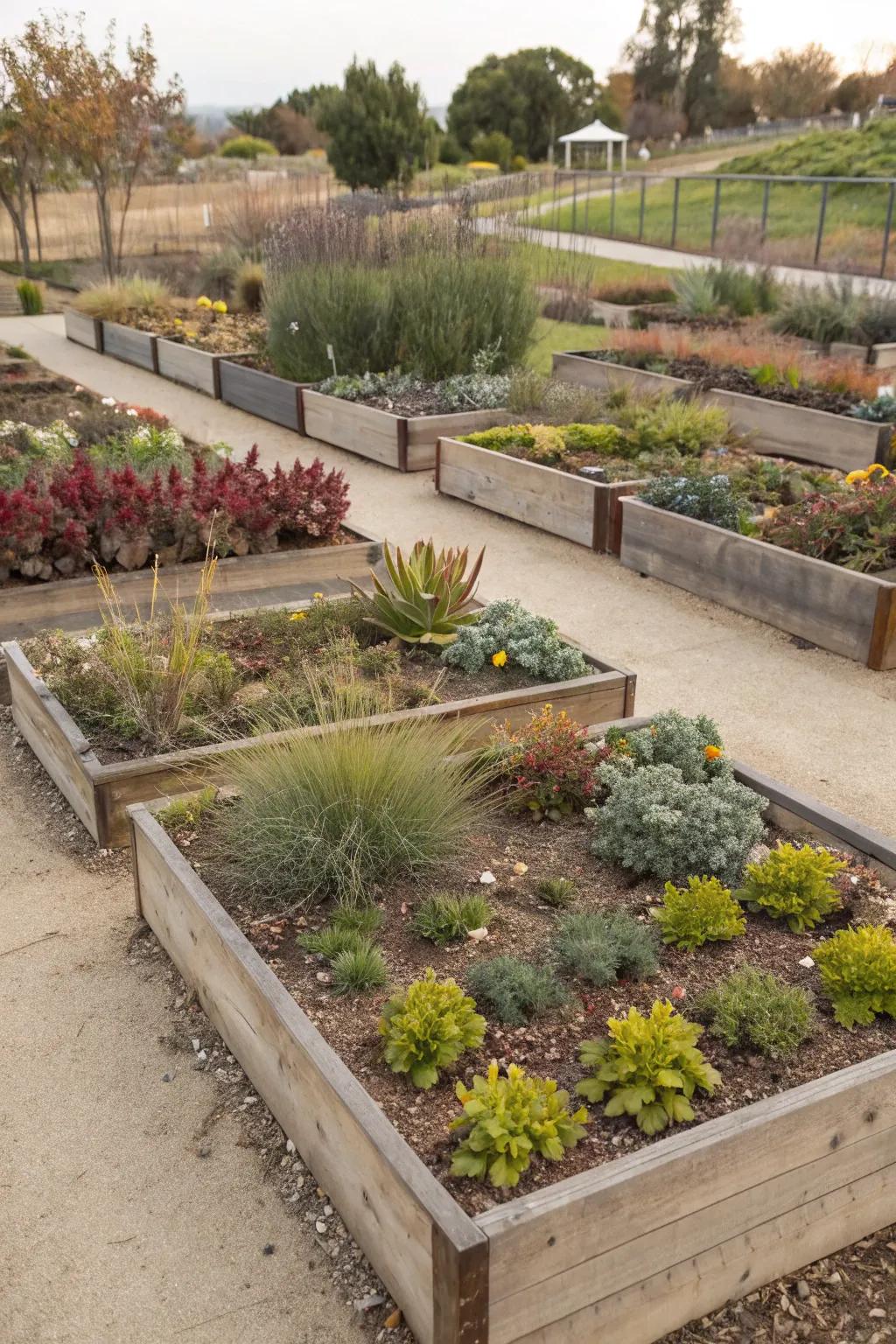
Raised beds can enhance drainage and make gardening more accessible. I love how they keep everything neat and organized in my space.
A few helpful options:
- Wooden Raised Garden Bed Kit: Transform your garden with elevated bed kits for better drainage and organized planting.
- Soaker Hose Irrigation System: Ensure even water distribution with easy-to-install soaker hose irrigation for raised beds.
- Organic Raised Bed Soil Mix: Boost plant growth with nutrient-rich soil mix designed specifically for raised garden beds.
15. Include a Water Feature
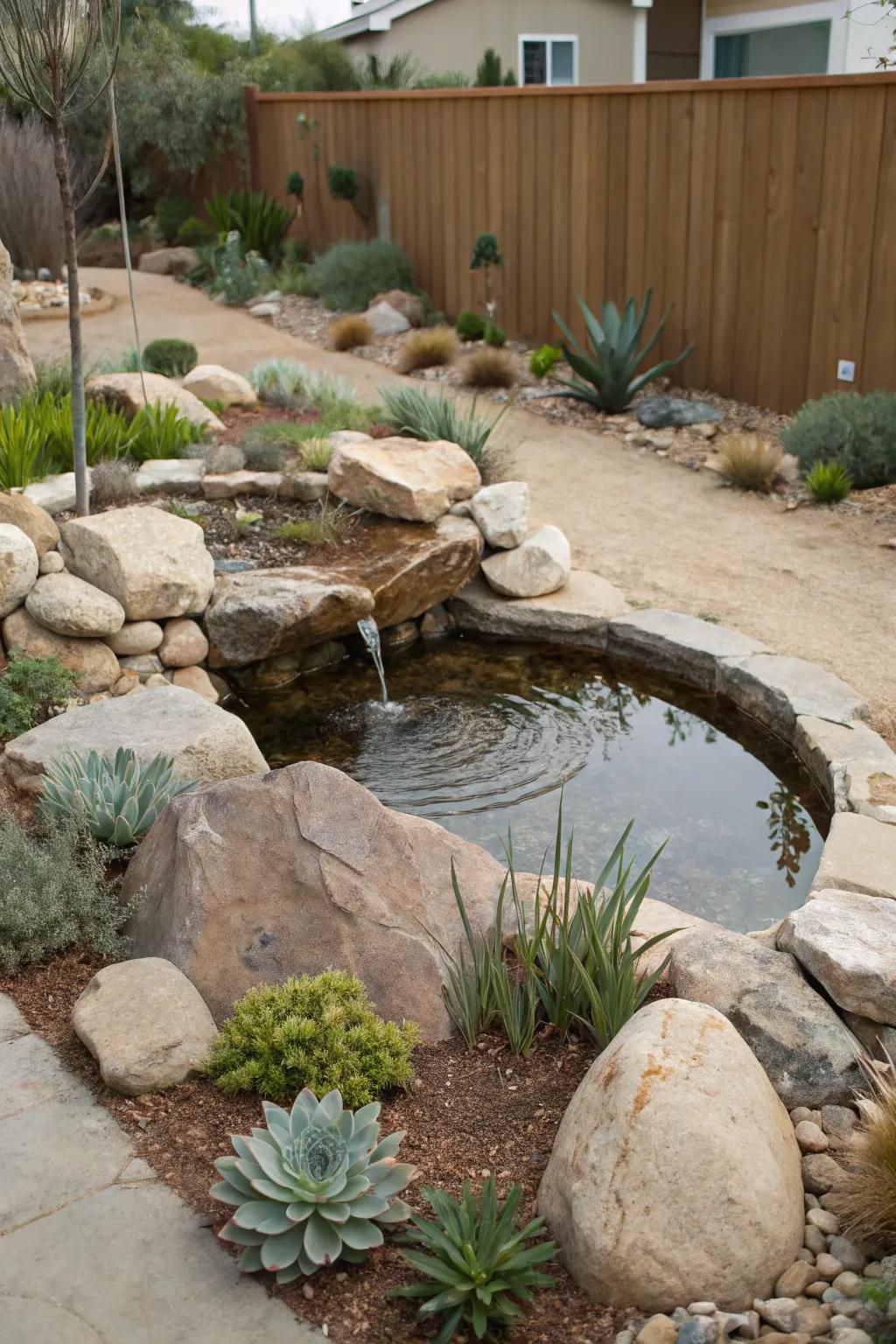
A small, recirculating water feature can add sound and movement without wasting water. I love the soothing sound it brings to my outdoor space.
Give these a look:
- Solar Water Pump Kit: Enhance your space with an eco-friendly solar pump, perfect for small garden water features.
- Outdoor Fountain Lights: Add ambiance to your water feature with waterproof LED lights, bringing it to life at night.
- Natural Stone Fountain Spout: Create a serene soundscape with a stone spout, blending seamlessly into your natural garden.
16. Opt for Desert-Inspired Plants
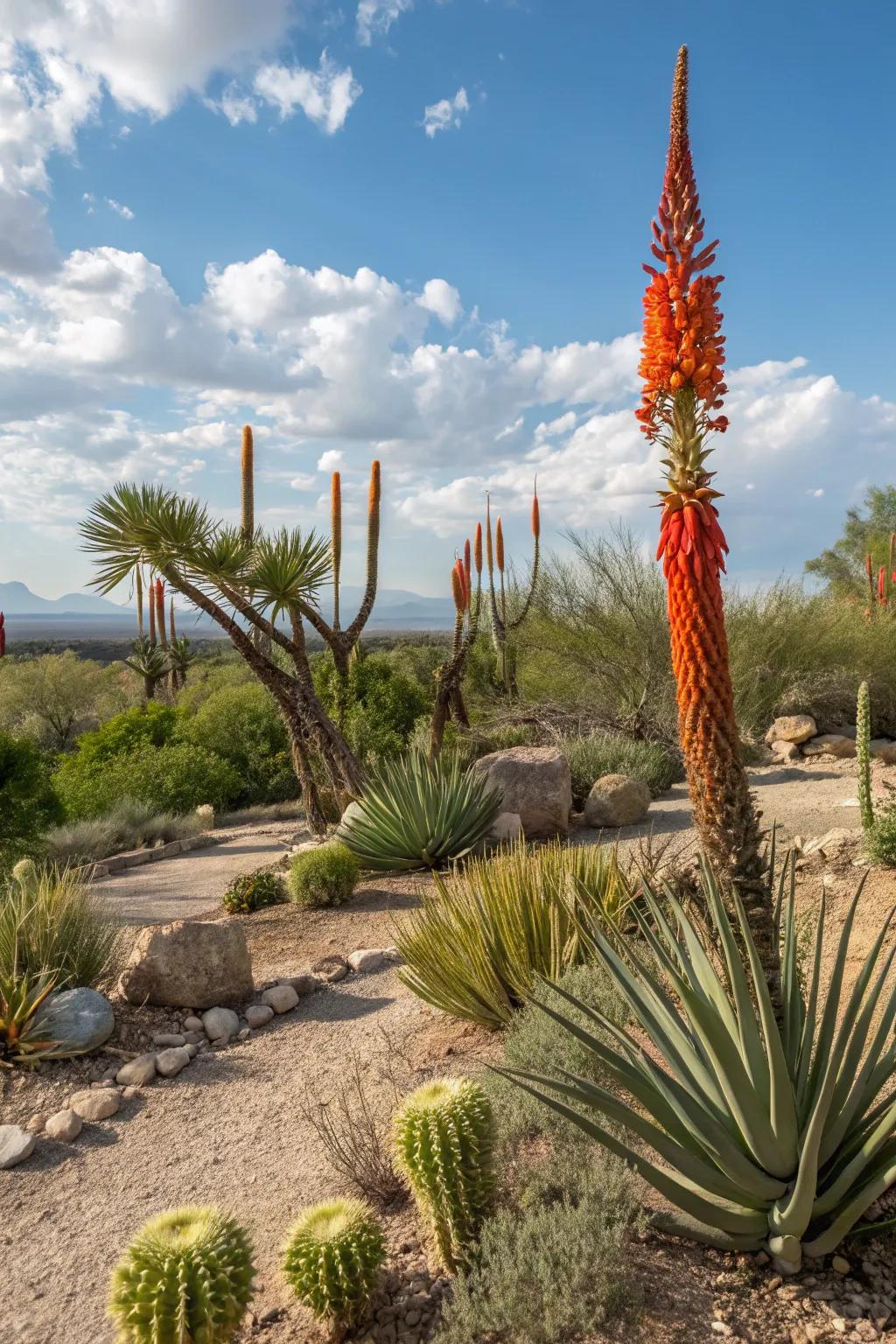
Plants like Torch Lily and Yucca thrive in sunny, dry conditions. Their dramatic shapes add a desert flair that’s both eye-catching and practical.
Consider these options:
- Drought-Resistant Torch Lily Seeds: Enhance your garden with Torch Lily seeds, perfect for creating a vivid desert landscape.
- Yucca Plant Starter Kit: Cultivate a striking yucca plant with this starter kit, ideal for sunny, dry gardens.
- Desert Landscaping Pebbles: Add texture and style to your xeriscape with these natural desert landscaping pebbles.
17. Try Agave for a Bold Statement
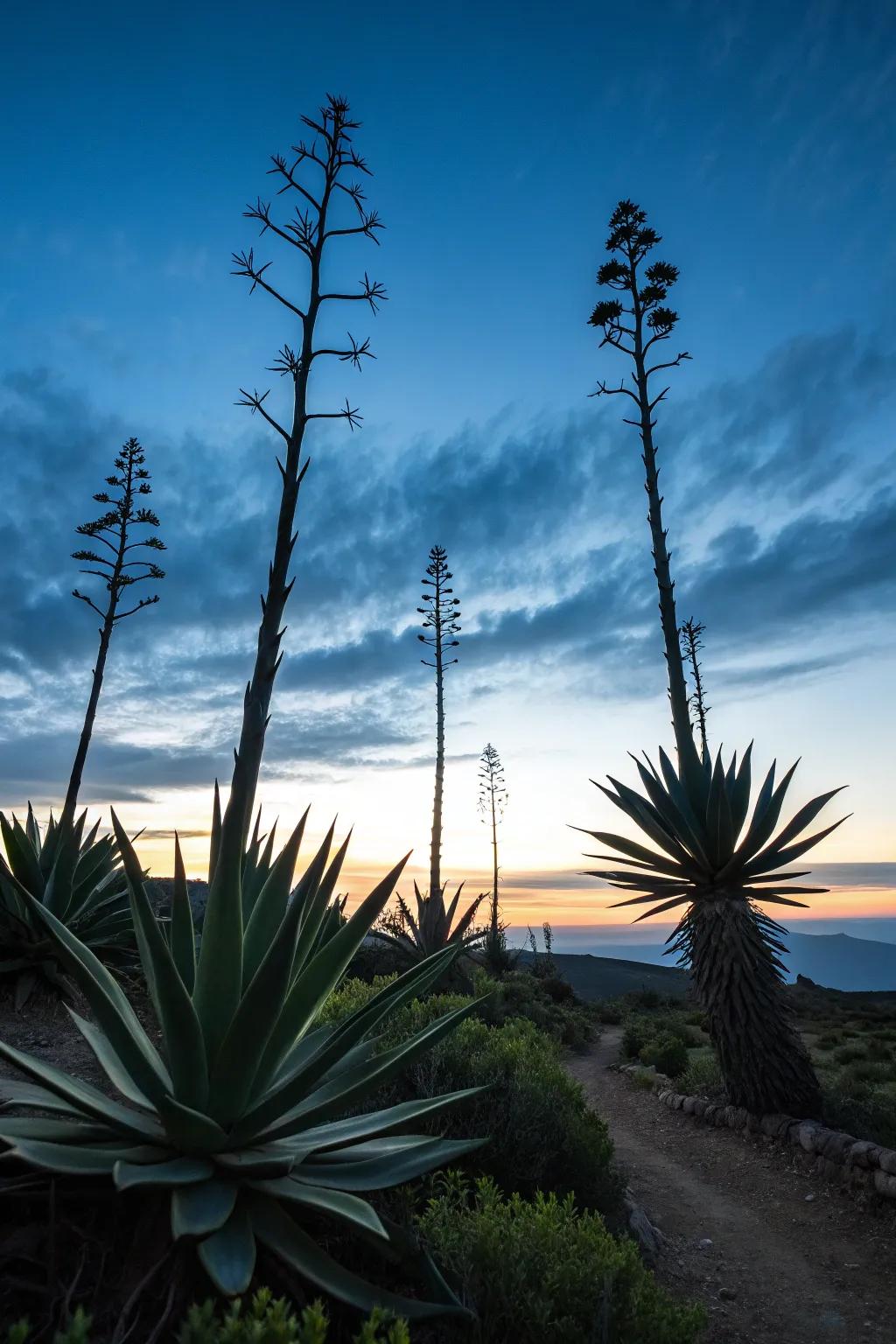
Agave plants make a striking addition with their bold, architectural look. They’re a conversation starter in my garden, and so easy to maintain!
Items that may come in handy:
- Agave Plant Seed Pack: Grow your own stunning agave plants effortlessly with this easy-to-use seed pack.
- Outdoor Agave Planter: Enhance your garden with a stylish planter perfect for showcasing your agave plants.
- Plant Care Kit for Succulents: Keep your agave thriving with a comprehensive care kit tailored for succulents.
